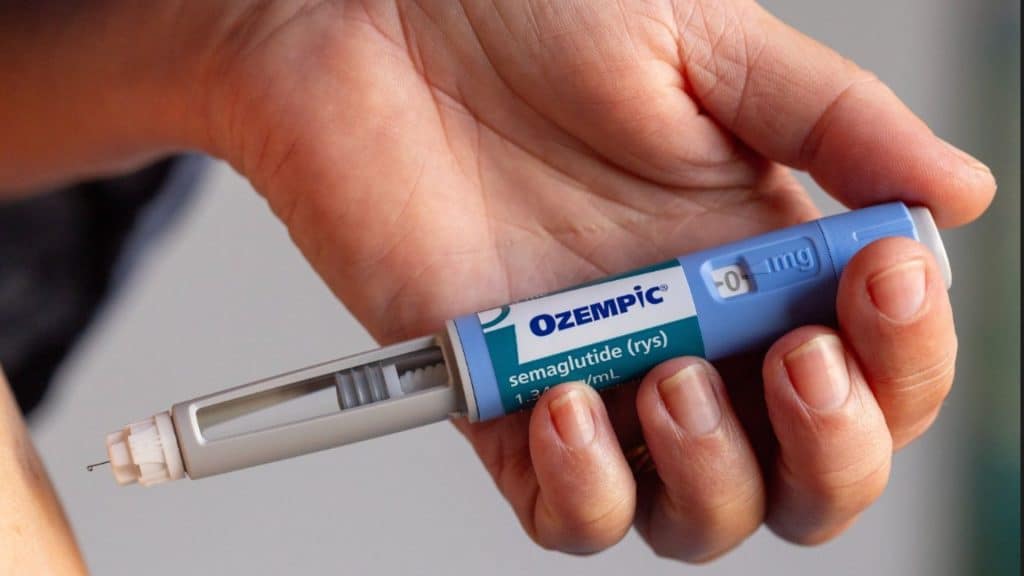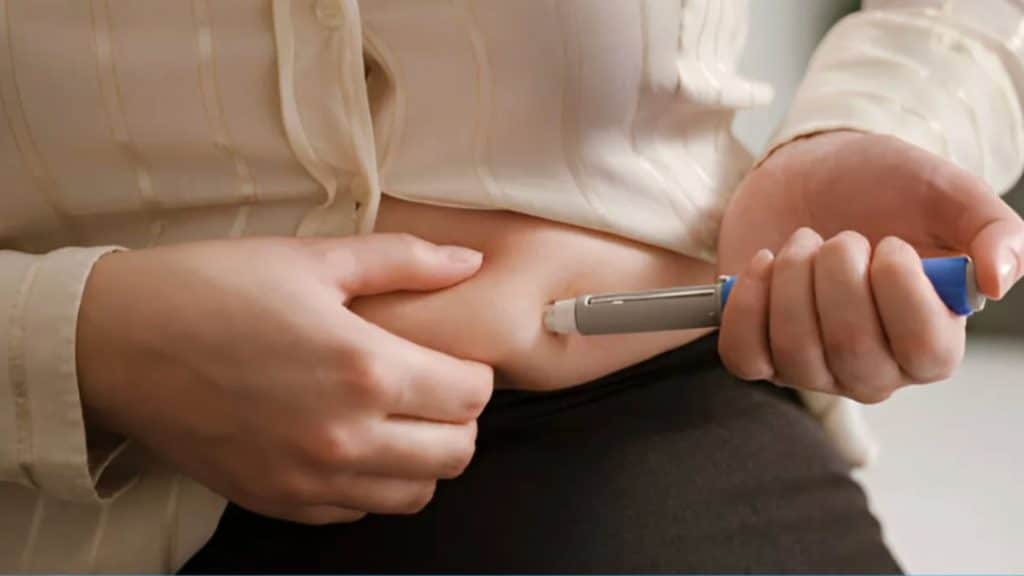Are you thinking about switching from semaglutide to tirzepatide?
Many people reach a point where their current medication isn’t delivering the results they hoped for. Weight loss stalls. Blood sugar remains stubborn. Side effects become frustrating.
This guide walks you through everything you need to know about making the switch safely. You’ll learn the key differences between these medications, when switching makes sense, and what to expect during the transition.
If you’re wondering if you can switch from semaglutide to tirzepatide, this complete resource breaks down how, why, and what happens when you make that change under proper medical care.
What Is the Difference Between Semaglutide & Tirzepatide?
Before switching, it’s essential to understand the differences between semaglutide and tirzepatide.
Semaglutide (Ozempic, Wegovy) is a GLP-1 receptor agonist. It mimics a natural gut hormone that helps control appetite and digestion.
Tirzepatide (Mounjaro, Zepbound) targets both GLP-1 and GIP receptors. This dual action may enhance blood sugar regulation and fat metabolism.
Both slow stomach emptying and increased fullness. Tirzepatide’s added GIP activity is what sets it apart.
| Feature | Semaglutide | Tirzepatide |
|---|---|---|
| Mechanism | GLP-1 agonist only | GIP + GLP-1 dual agonist |
| Injection frequency | Once weekly | Once weekly |
| Starting dose | 0.25 mg | 2.5 mg |
| Maximum dose | 2.4 mg (Wegovy®) | 15 mg |
| Average weight loss | 10-15% body weight | 15-22% body weight |
| Diabetes control | Strong | Stronger in some studies |
Tirzepatide has shown greater average weight loss in studies; however, it’s not always the best option for everyone.
Your results depend on factors such as your starting weight, existing health conditions, and how your body responds to treatment.
Some respond well to semaglutide. Others may plateau; that’s when a switch to tirzepatide could be a worthwhile consideration.
Why Switch from Semaglutide to Tirzepatide?
People consider switching from semaglutide to tirzepatide for several valid reasons. Let’s look at the most common ones.

1. Weight Loss Plateaus
Clinical data indicate that tirzepatide may help overcome these stalls. The dual receptor action can restart weight loss when semaglutide alone isn’t enough.
2. Better Blood Sugar Control
Studies show tirzepatide often lowers A1C more than semaglutide. This difference matters when you’re trying to reach specific diabetes goals.
3. Looking for Stronger Results
Tirzepatide showed greater reductions in both weight and blood sugar across multiple studies. Patients on tirzepatide lost more weight than those on semaglutide.
4. Side Effect Management
Some people actually tolerate tirzepatide better than semaglutide. While both can cause nausea and digestive issues, individual responses to these effects vary.
How to Switch from Semaglutide to Tirzepatide: Step-by-Step
Transitioning from semaglutide to tirzepatide is a common transition for those seeking continued results. Here’s a step-by-step guide to help you make the switch safely and effectively.

1. Consult Your Doctor
Discuss your goals, current medications, and medical history before making any changes. This ensures the new plan aligns with your health needs and treatment expectations.
Your provider can also help monitor for any early issues.
2. No Washout Needed (in most cases)
Most patients can begin tirzepatide the week after their final semaglutide dose. Some providers may recommend a brief gap based on individual factors.
Always follow your specific dosing instructions closely.
3. Direct Switch Is Standard
You typically stop semaglutide and start tirzepatide at your next scheduled injection time. No step-down or tapering is required unless advised otherwise.
This approach helps maintain continuity of treatment.
4. Start Low: 2.5 mg Weekly
Even if you were on a higher semaglutide dose, start tirzepatide at 2.5 mg. Starting low reduces the likelihood of early digestive issues.
Your body needs time to adjust to the new medication.
5. Follow a Gradual Titration Schedule
- Weeks 1–4: 2.5 mg
- Weeks 5–8: 5 mg
- Weeks 9–12: 7.5 mg
- Weeks 13–16: 10 mg
- Weeks 17–20: 12.5 mg
- Week 21+: 15 mg (if needed)
6. Adjust Based on Tolerance and Progress
If you experience side effects, it’s okay to pause or stay at a lower dose longer. Communicate openly about how you’re feeling throughout the process.
Personalized pacing leads to better long-term results.
Practical Tips to Minimize GI Side Effects
Changing medications can cause digestive upset. Here’s how to reduce it:
- Eat smaller meals
- Choose bland foods initially
- Stay hydrated
- Inject on an empty stomach
- Move your injection site
- Take it slow with fiber
To minimize digestive discomfort during the switch, follow these tips consistently and listen to your body’s signals.
What to Expect After Switching?
Knowing what happens after switching from semaglutide to tirzepatide helps you prepare. Let’s break this down by timeline.
| Phase | Weeks | What to Expect | Avg. Weight Loss |
|---|---|---|---|
| Early Phase | 1–4 | Mild appetite changes, slight nausea, digestive shifts, and early body adjustment | 2–4 lbs total |
| Mid Phase | 5–12 | Stronger appetite suppression, food aversions, energy changes, and cravings shift | 1–2 lbs/week (avg) |
| Long-Term | 3+ Months | Appetite stabilizes, slower but steady loss, fewer side effects, metabolic benefits | 0.5–1 lb/week (avg) |
Note: Individual results may vary; consult a healthcare professional for personalized advice.
Impact on Blood Sugar Control
For people with type 2 diabetes, glucose management often improves within weeks.
- Fasting blood sugar drops overnight as the medication works.
- Morning glucose readings improve first; post-meal spikes lessen.
- Slows carb absorption and enhances insulin response.
- A1C decreases typically appear after 12–16 weeks, often by 1–2%.
- Risk of low blood sugar if taking insulin or sulfonylureas (medication adjustments needed).
Risks, Side Effects, and Warnings

Switching from semaglutide to tirzepatide comes with risks. You need to know what to watch for.
1. Common Overlapping Side Effects
Both medications affect your digestive system. Expect these potential issues:
| Side Effect | Description | Notes |
|---|---|---|
| Nausea | Mild to severe, often limits eating | Worst in the first weeks of the new dose |
| Vomiting | Occurs in some patients | Call the doctor if >2 times in 24 hours |
| Diarrhea | Loose stools after dose increases | Usually lasts a few days |
| Constipation | Slowed digestion | Common side effects |
| Fatigue | Tiredness or low energy | Often improves after the first month |
| Decreased Appetite | The intended effect can be too strong | It may affect nutrition if too severe |
| Abdominal Discomfort | Bloating, cramping, general upset | Usually mild, should improve over time |
| Acid Reflux/Heartburn | Caused by slowed stomach emptying | Can push acid upward |
If side effects persist or worsen, consult your healthcare provider for guidance.
2. Unique Tirzepatide Risks
Hypoglycemia (low blood sugar) risk increases if you take certain diabetes medications. This includes:
- Insulin (any type)
- Sulfonylureas (glipizide, glyburide)
- Meglitinides (repaglinide)
Your doctor must reduce these medications when you start tirzepatide. Otherwise, blood sugar can drop dangerously low.
Signs of low blood sugar include shakiness, sweating, rapid heartbeat, confusion, extreme hunger, and dizziness. If these symptoms occur, consume 15g of fast-acting carbohydrates, check your blood sugar level, and contact your doctor.
Rare Complications: Watch for signs of pancreatitis, gallbladder issues, kidney problems, and potential thyroid tumors. Seek immediate medical care if you experience severe abdominal pain, jaundice, swelling, or persistent throat symptoms.
3. Critical Contraindications
Do NOT switch to tirzepatide if you have:
- Multiple Endocrine Neoplasia syndrome type 2 (MEN2)
- Personal or family history of medullary thyroid carcinoma
- Pregnancy
- Breastfeeding
- Severe gastrointestinal disease
- History of pancreatitis
- Diabetic retinopathy complications
Managing Side Effects
Most side effects improve with these strategies:
| Symptom | Tips |
|---|---|
| Nausea | Eat small, frequent meals; avoid lying down after eating; try ginger tea/candies; consider anti-nausea meds if severe |
| Constipation | Drink 8+ glasses of water daily; add fiber gradually; stay active; use stool softeners if needed |
| Diarrhea | Stay hydrated with electrolytes; eat bland foods; avoid high-fat meals temporarily |
| Fatigue |
Eat enough protein; avoid drastic calorie cuts; get adequate sleep; check vitamins |
Following these strategies can help manage common side effects and improve your comfort.
When to Stop Immediately?
Discontinue tirzepatide and contact your doctor right away if you experience:
- Severe, persistent abdominal pain
- Continuous vomiting for 24+ hours
- Signs of allergic reaction (rash, swelling, breathing trouble)
- Severe dehydration
- Suspected pancreatitis
- Vision changes
- New neck lump
Your safety comes first. These medications are powerful tools but require respect and careful monitoring.
Switching from Tirzepatide to Semaglutide

Yes, you can switch back. The process is straightforward.
How to switch back:
Stop tirzepatide and wait one week. This lets you clear your system partially.
Start semaglutide at a moderate dose. If you previously tolerated 1 mg or higher, your doctor might start you at 0.5 mg weekly.
Titrate up gradually. Follow a normal escalation schedule even if you used higher doses before.
What to expect:
Weight maintenance or gain is possible. Appetite returns somewhat. The GLP-1-only action is less potent than dual agonist therapy.
Side effects shift. You may experience the adjustment period again, although it is often milder the second time. Blood sugar control may change. Monitor glucose closely if you have diabetes.
Conclusion
Switching from semaglutide to tirzepatide is a personal decision that requires careful consideration. Your body is unique, and what works for others may not work for you.
Tirzepatide offers stronger potential for weight loss and blood sugar control, but it also comes with its own challenges and costs.
Work closely with your doctor to evaluate your specific situation, health goals, and financial realities. Track your progress systematically and stay patient during the adjustment period.
Remember that finding the right medication is often a process of trial and observation. With proper medical guidance and realistic expectations, you can make an informed choice that supports your long-term health.





